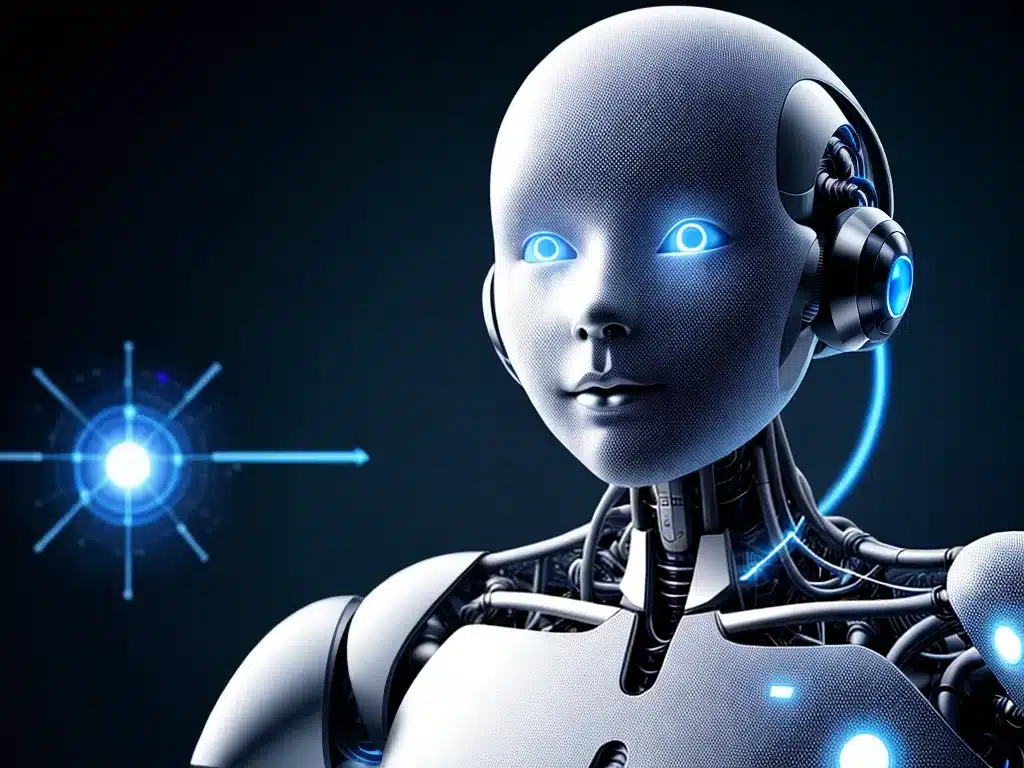

How Artificial Intelligence is Revolutionizing Computing
Introduction
Artificial intelligence (AI) is transforming the field of computing in revolutionary ways. As I explore this topic, I will provide an in-depth look at how AI is changing various aspects of computing and revolutionizing the capabilities of computers.
AI is Advancing Computer Vision
Computer vision is a field of AI focused on enabling computers to identify, process, and analyze visual data such as images and videos. AI has led to major breakthroughs in computer vision:
-
Deep learning algorithms like convolutional neural networks are enabling computers to recognize objects, faces, and scenes with human-level accuracy. For example, AI systems can now identify thousands of distinct objects with over 90% accuracy.
-
Image recognition technologies powered by deep learning are enabling self-driving cars to detect pedestrians, read road signs, and navigate real-world environments. Waymo’s self-driving cars have driven over 20 million miles leveraging AI-based computer vision.
-
AI is advancing video analysis capabilities. For instance, security cameras can now use AI to identify suspicious activities and track individuals over time.
-
Medical imaging analysis has been revolutionized by AI. AI systems can automate the analysis of X-rays, MRIs, and other scans to detect diseases with reliability matching human radiologists. This expands access to expert analysis.
Overall, the progress in computer vision driven by AI is enabling computers to understand and engage with the visual world as never before possible. This will open up countless new applications.
AI is Vastly Improving Natural Language Processing
Natural language processing (NLP) focuses on enabling computers to understand, interpret, and generate human languages. AI has led to transformative advances in NLP:
-
Machine translation powered by neural networks now allows for automated translation between languages with near human-level quality. For example, Google Translate uses AI to translate over 100 languages.
-
Speech recognition accuracy has improved dramatically thanks to deep learning. Smart assistants like Alexa, Siri and Google Assistant leverage NLP to understand spoken commands.
-
Sentiment analysis tools can now use NLP to interpret the emotions and attitudes expressed in text with over 80% accuracy. This enables analysis of customer feedback.
-
AI chatbots can hold conversations using NLP to understand contexts and respond appropriately. Chatbots are being used for customer service, entertainment and education.
The progress in NLP is making it possible for computers to understand and communicate in natural language like never before. This will enable more intuitive human-computer interaction.
AI is Making Revolutionary Gains in Robotics
AI techniques like reinforcement learning and neural networks are rapidly advancing robotics:
-
Industrial robots are becoming more adaptive and flexible thanks to AI, allowing for automation of more complex manufacturing tasks. Kuka is a leader in applying AI to industrial robotics.
-
Robot dexterity is improving as AI enables robots to manipulate diverse objects with grace and precision. For example, RightHand Robotics’ AI platform allows versatile grasping of various items.
-
Self-driving vehicles are using AI to navigate real-world driving with increasing autonomy. Leaders include Waymo, Cruise and Tesla.
-
AI-powered drones like Skydio leverage AI to navigate unfamiliar environments without human guidance. Drones will take on more applications due to AI.
-
Surgery robots like those made by Intuitive Surgical employ AI techniques to assist surgeons and analyze medical scans during operations. This expands capabilities beyond human limitations.
The integration of AI into robotics is allowing autonomous systems to take on real-world, complex tasks in manufacturing, transportation, healthcare, and more. This will expand automation.
AI is Vital for Advances in Predictive Analytics
Predictive analytics applies statistical and machine learning techniques to make data-driven predictions about the future. AI has become integral for extracting insights from vast datasets:
-
Fraud detection in finance leverages AI algorithms to analyze customer data and detect subtle indicators of fraudulent activity not discernible to humans. This shields firms from major losses.
-
Demand forecasting in supply chain management now relies on AI-powered time series forecasting to account for complex, real-world variables and make accurate predictions about future inventory needs.
-
Predictive maintenance uses AI systems to monitor industrial equipment, predict failure based on sensor data, and recommend maintenance before breakdowns occur. This avoids costly downtime.
-
AI techniques like reinforcement learning allow optimization algorithms to make sequential decisions, constantly improving to maximize a reward function. This is powerful for applications like financial trading.
-
Search engines and social media platforms utilize AI to study user data, detect patterns, and deliver highly personalized content and recommendations tailored to individual interests and preferences. This drives engagement.
The ability of AI to uncover insights in complex messy data and make accurate predictions is driving automation across industries like finance, retail, manufacturing, and more.
Conclusion
In summary, artificial intelligence is advancing computing capabilities in exceptional ways across computer vision, natural language processing, robotics, predictive analytics, and more. The progress in AI is still accelerating rapidly, and its integration into computing systems will enable technologies that surpass human intelligence in the future. While raising some risks, the benefits of AI computing will transform our lives, businesses, and society through expanded automation and insights from data.












